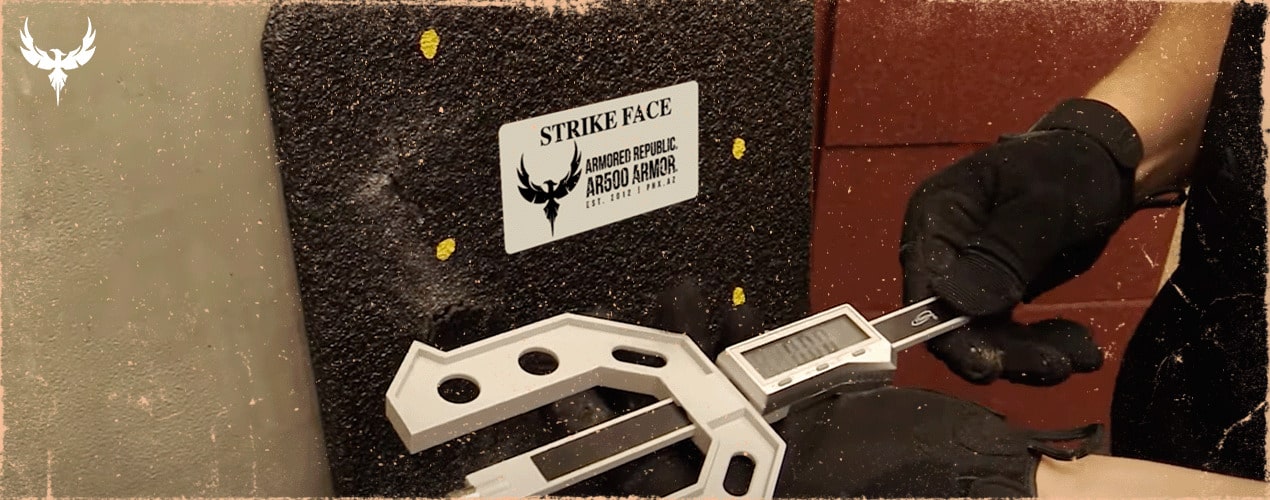What is Back Face Deformation?

When researching armor online, you may come across claims like the following:
‘“That armor might stop the bullet, but the mere kinetic force will still kill you….”
In some cases, this may be true. But, most of the time, statements like these highlight a deficit of knowledge about the phenomenon known as Back Face Deformation.
This article explores the nature of Back Face Deformation as well as the differences in kinetic force mitigation between the four primary armor types (Soft Armor, Polyethylene, Alloy, and Ceramic).
What is Back Face Deformation?
Back Face Deformation (also called Backface Deformation), or BFD for short, is the change in shape that armor suffers when shot. It is also used more broadly to describe the effect of a bullet transferring its kinetic energy into an armor plate and the armor plate's wearer.
Notably, the term Back Face Deformation is used in a wide variety of sciences, such as for construction and engineering, but takes on special relevance in the world of armor: In the context of armor, BFD is not merely a mechanical phenomenon but ends with energy transfer to the human body, which takes on particular importance.
Back Face Deformation is tested in armor testing facilities via a single depth measurement. The current measurement of BFD that is considered “survivable” by healthy adults is set to 44MM -or- 1.73” inches. However, this measurement is not a carefully-chosen standard, but rather operates as a general guideline. It also does not take into medical conditions such as pacemakers, heart disease, and bone frailty.
How do different armor materials react when shot?
The way different armor materials resist deformation is dependent on both the composition of the material and the projectile fired. For example, a rifle-rated plate and a soft armor panel will both mitigate 9mm effectively; however, the rifle-rated plate will perform far better. Additionally, a rifle plate stopping a rifle threat may impact a person harder than a soft armor panel mitigating a hit by a handgun. All BFD testing numbers quoted in this article were taken by the NIJ, at the appropriate Threat Levels advertised for the plate. For the sake of clarity in this article, we will be referring to threats only relevant to the mitigated Threat Level:
IIIA = 44 magnum (FMJ/HP) BFD
III = 7.62x51MM (M80 ball MSC) BFD
III+ = 5.56x45 (M855 / M193), 7.62x51MM (M80 ball MSC) BFD
IV = 30-06 (M2-AP) BFD
Soft Armor
The first armor type we will discuss will be soft armor. Our soft armor line consists of our S2 panel, an industry-leading panel that provides maximum concealment and protection against handgun rounds, which are used in 95% of all armed encounters. In the early days of soft armor (from around the late 1980s and through the 90s) it was not uncommon for police officers to decline to wear protective vests while on duty. This was often due to the lethal transfer of energy seen from the magnum-caliber revolvers made popular at the time.
Some vests employed thin sheets of steel or carbon fiber over the sternum notch of the vest to prevent damage to the thoracic cavity. The listed threat difference between NIJ Level II and IIIA is the difference between stopping a .357 magnum and a .44 magnum respectively; however, you may be supposed to learn that most Level II vests can actually stop the aforementioned .44 magnum.
Despite Level II being able to stop a .44 magnum, the transfer of energy from this round is lethal to the armor’s wearer. In modern times, there have been significant strides in the engineering of soft armor, so much so that Level II soft armor has been made obsolete, with many manufacturers no longer producing it given the equally low cost to make a IIIA panel in its place.
When testing BFD on soft armor, we have seen, on average, a 35MM ballistic clay impression with 230 GR .44 magnum loads @ 1430 FPS. Although this may seem high, keep in mind this is the armor's maximum “proof load” threat. Threats like 9mm and 45ACP, which are far more common, have a much lower BFD index.
Polymer Armor
Polymer armor, most commonly manifested as UHMWPE (Ultra-High Molecular Weight Polyethylene), is the newest armor material to see widespread usage. This is due to its remarkably low weight while still being capable of stopping rifle rounds; PE armor can address most high-velocity rifle-rated threats and is highly effective at stopping projectiles made of lead and copper. However, the composition and reaction of a ballistic threat will often cause a sudden swelling and bulging in the plate.
This vulnerability is due to its lightweight composition- Polymer armor lacks the physical material to resist ballistic forces and instead uses material density to trap the projectile. Although this armor has the highest back face deformation of all rifle-rated plates, the need to be mobile can often outweigh this factor- you will spend 99% of your time in armor not being shot, and for all those activities, a 3.3lb UHMWPE plate such as our P2 will provide you with the lightest rifle-rated protection possible. All armor is a balance of weight, cost, shelf life, and protection, with this armor type favoring weight and protection first.
Additionally, as noted below, there are ways to further mitigate BFD when using more vulnerable materials.
In testing, we have seen BFD measurements up to 38MM with 7.62x51MM (M80 Ball) @2780 FPS, and approximately 20MM BFD for 5.56x45 (M193) and 7.62x39 (type 56 MSC) cartridges.
Ceramic Armor
Ceramic armor, as noted in previous articles, stops bullets via breaking apart when shot, transferring energy across the plate. Additionally, the vast majority of Level IV Ceramic offerings use a backer made of either UHMWPE or soft armor fabric, which was shown above to be vulnerable. This is important to note since the BFD capabilities of Ceramic armor are often overestimated in the body armor community, and precautions ought to be taken.
Here are a few thoughts to keep in mind: the NIJ only tests a single shot of this armor and threat type. Any subsequent real-world shots on-plate, even with the same weapon and cartridge type, could have variably degraded BFD measurements, usually depending on the ceramic strike face’s condition and backer used. A less intact strike face will result in greater levels of BFD.
In testing our multi-hit ceramic MHC2 plate, we have seen an average of 30MM BFD in stopping a single hit of 30-06 (M2 AP) @ 2880 FPS.
Alloy Armor
Much falsehood has been spread on the internet about alloy armor, such as rumors that steel plates vibrate when hit and thereby transfer the most energy. In reality, steel armor is actually the most effective at mitigating BFD. This is due to their excellent combination of surface hardness and material flexibility which aids in dispersing the pressure. Steel plates can take multiple hits of a rifle threat, in the same spot, with no dip in structural integrity.
In fact, when doing tests for Back Face Deformation, it is common to see no backside dimpling in the ballistic clay after a steel plate is shot. This, again, is due to steel’s higher density. In testing our Heritage Level III, along with our III+ A1 and A2 plates, we have seen BFD averages come in at less than 8MM with 7.62x51MM (M80 Ball), and less than 3MM BFD with 5.56x45MM (M193 and M855) and 7.62x39MM (type 56 MSC). The numbers speak for themselves here.
What else can I do to address BFD?
No matter the material you use, using additional BFD-mitigating Tools of Liberty is advisable. Here are two ways to mitigate the blunt impact of rounds to reduce pain as well as prevent damage:
The first device you can employ in conjunction with your armor is a non-newtonian Trauma Pad. A trauma pad uses a special type of foam that is reactionary when kinetic forces are applied to it. Whereas most materials would transfer a large portion of kinetic energy to the object behind them, a trauma pad is designed to absorb that energy in itself- even with all the pressure of high-velocity objects like bullets. Trauma pads can, for certain armor types, even cut BFD in half.
Lastly, many plate carriers feature some type of padding that further aids in reducing BFD. All of the NIJs BFD tests quoted above were done with the plates bare against calibrated ballistic impressioning clay, so all of the BFD numbers expressed in this article would be reduced further when used as intended, in plate carriers. Our Testudo Plate Carrier employs one of the best padding materials on the market, 3D Mesh Foam, and is highly effective at reducing BFD while also increasing air circulation against the wearer.
Ultimately, the goal of armor is threefold: Stop penetration. Stop BFD. Stop fragmentation. In that order. And our armor is carefully designed to do all three- start building your next great setup today.
